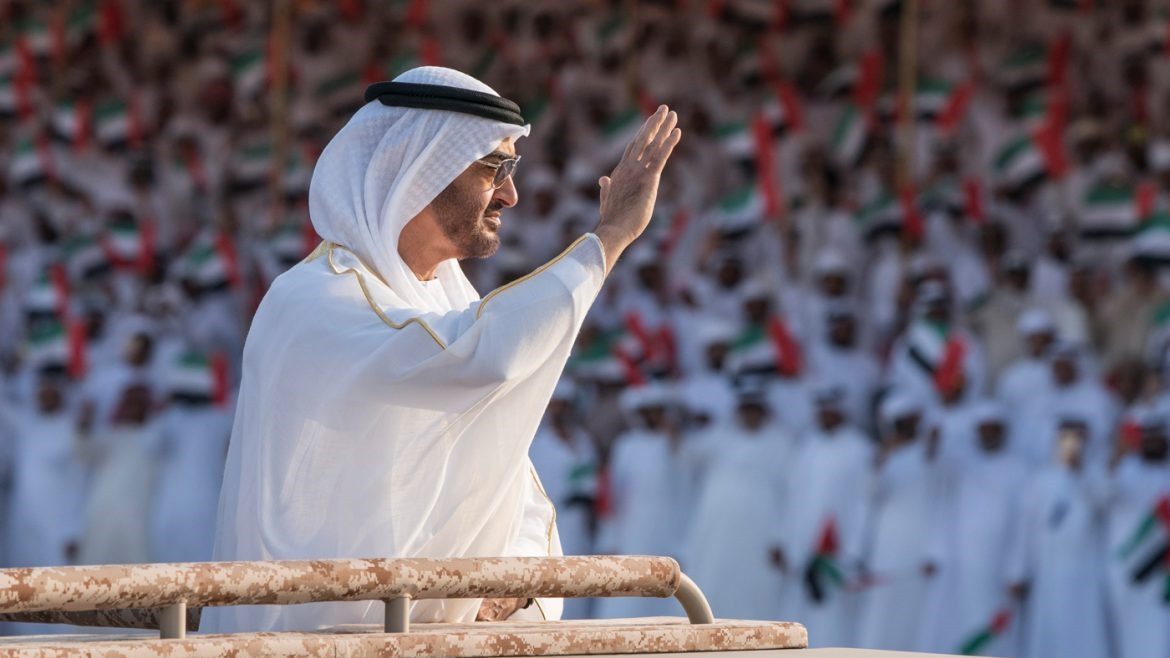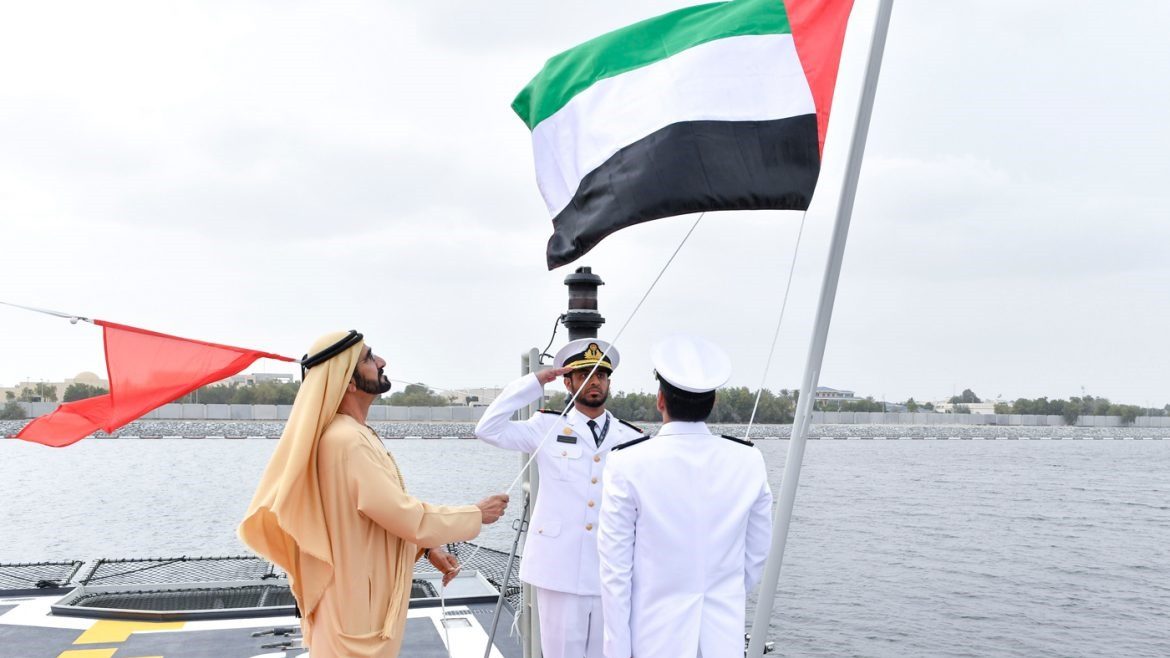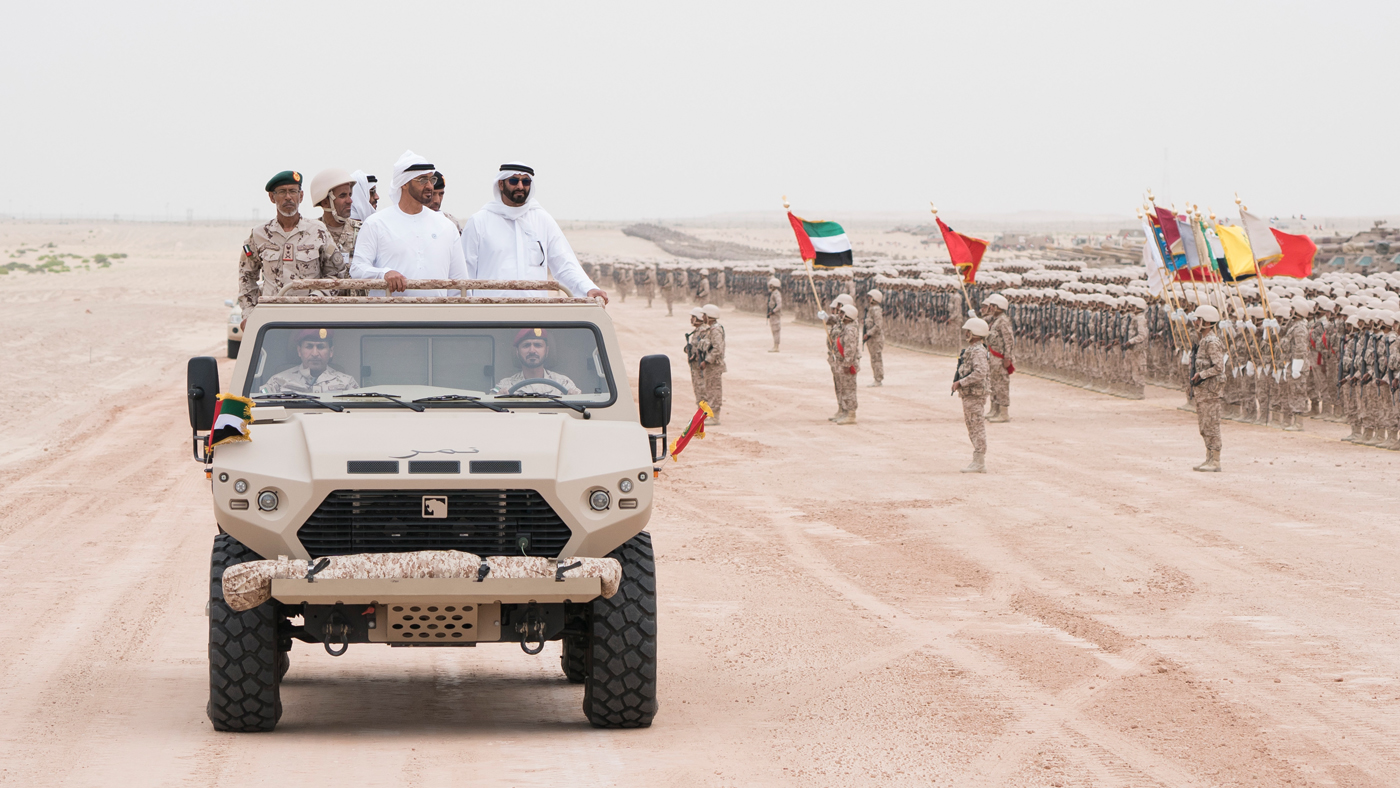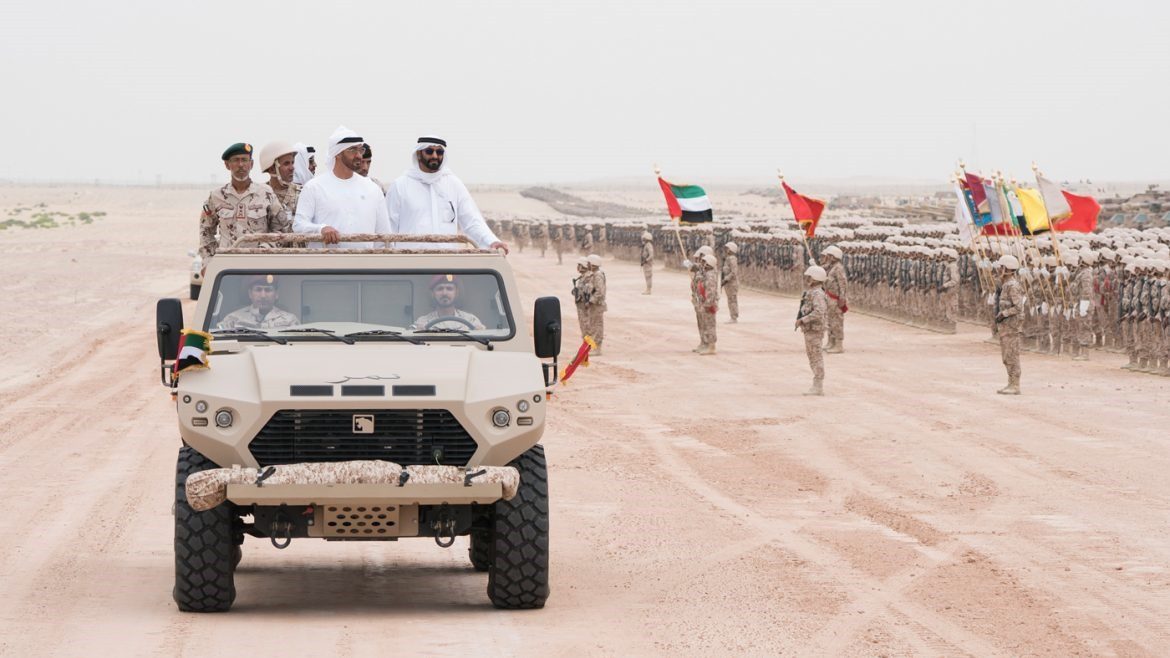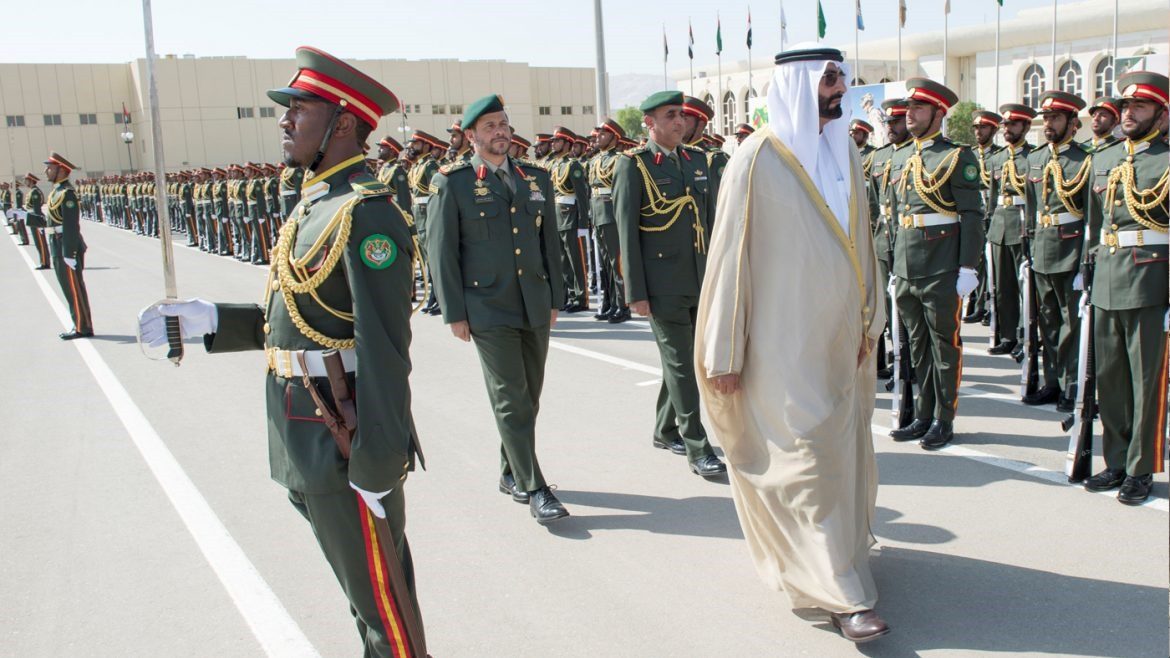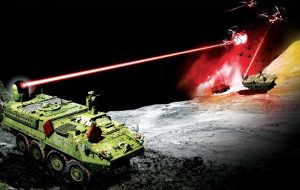There is a lot of talk at the moment about the concept of Network -Centric Warfare (NCW), where communications are documented at all levels of the armed forces during wartime operations, while providing a comprehensive picture of the theaters of operations, relying on digital communication systems and data processing by laptops or portable central computers, which are directly connected to the sensors, and military experts expect this concept to be the mainstay of military action in the coming years.
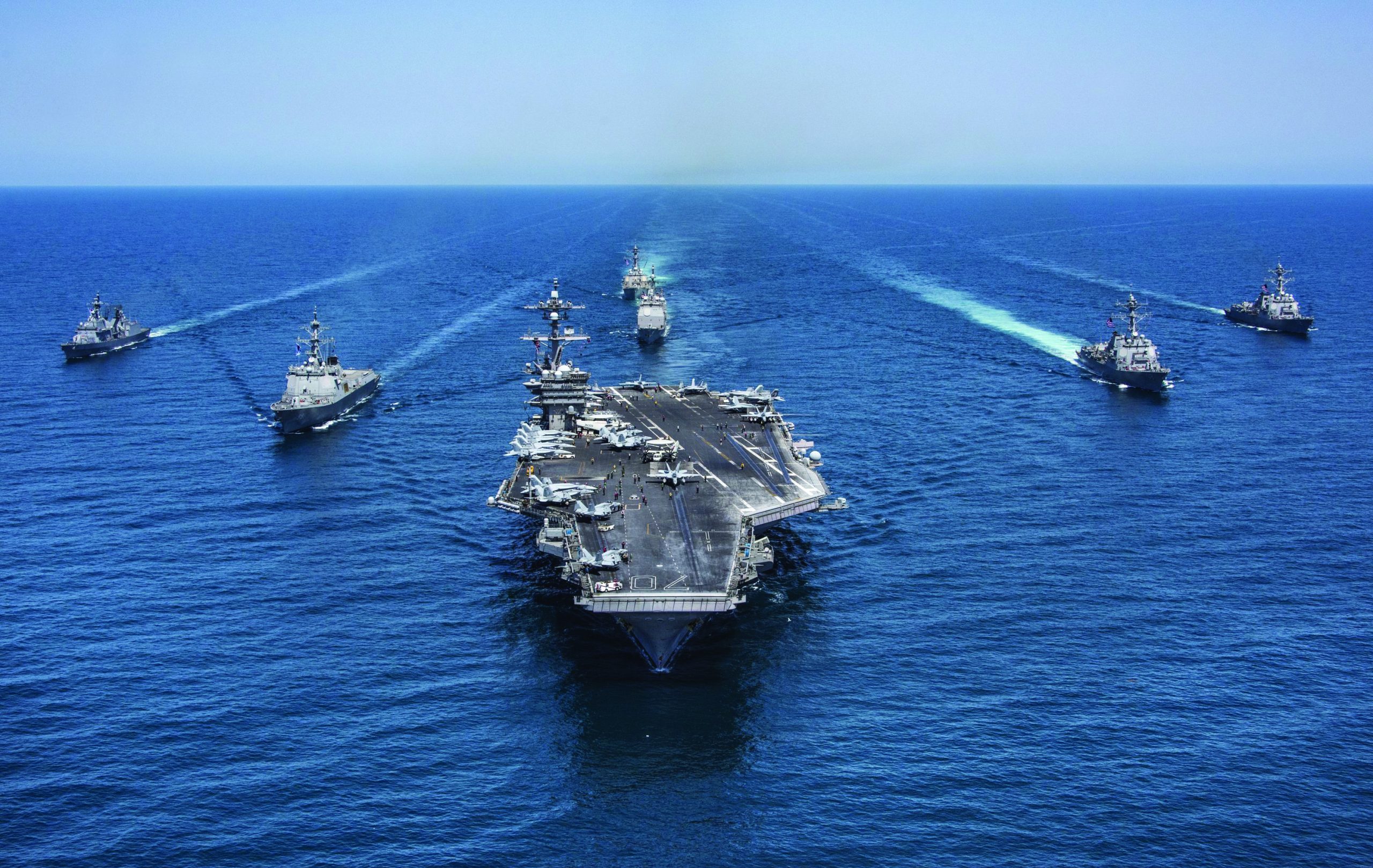
As the advanced navies are about to enter a new phase, in which computer network systems and information technology play a role that may be more important than the importance of warships, aircraft and submarines that benefit from this information, through the concept of network-centric warfare that depends on taking advantage of extensive investments in the fields of communication systems and intelligence, command and control, so that naval units, stationed near the coast, can increase their military capabilities, through what information systems provide to these units with the necessary real-time intelligence about enemy locations, and the ability to quickly react to expected threats.
Historically, in the age of gunboats, naval commanders could see all the activity around them through a simple telescope, but today, they need to perceive events across oceans, in the sky, and deep on land, thousands of miles away, through systems that allow them to reach this level of situational awareness, while they can collect information obtained from a host of sensors, including radar, video images, underwater sensors, visual reports sent from naval ships, automatic tracking systems, and the results of identifying targets from air and sea platforms, and then invest this information appropriately.
Network-centric warfare concept
Network-centric warfare can be defined as “a concept of operations based on informational superiority, which generates increased combat power through a network of sensors for decision makers and weapons systems, to achieve a common awareness of danger, increased speed of decision-making, greater degree of destruction, and increased effectiveness of survival, and a degree of self-harmony with changing circumstances. Network-centric warfare also aims to use integrated intelligence information, which is supposed to be provided by satellites, warplanes, unmanned aerial vehicles, and other sensors, in order to identify the correct targets and destroy them with precision-guided munitions.
The concept of network-centric warfare depends on the convergence of information technologies with military operations, where information is transferred from different sensors, carried by land, air and sea, to weapons of killing and destruction, in the digital battlefield. With the gradual transition from the industrial age to the information age, modern armed forces are moving to be able to electronically control the battlefield and communicate with each other on all fronts, and this leads to changing how the war is conducted, and helping the military to adapt to the field, which has become geographically undefined. According to the concept of network-centric warfare, complex comprehensive information networks are created to achieve information superiority over the enemy. In other words, knowing more information about friendly forces, about the battlefield, and about the enemy, and preventing him from knowing information about friendly forces, and this heralds new capabilities and prospects in wars, where operations end successfully and quickly, and at a lower cost. All the elements of the armed forces units: soldiers, commanders, and weapons, will be linked together electronically, completely, in a network way, to provide them with a joint operational picture of what is happening in every place of the battle space, and the area in which operations are carried out, and this image allows leaders to make decisions more quickly and possess precision fire, with heavy impact on the enemy.
The beginning of the twenty-first century witnessed a shift in the weapons, tactics and methods of fighting wars, which was evident in their transition from platforms’ warfare to network-centric warfare, which consists of a wide-range network of sensors, enabling combat units, whether on the ground, in the air, or at sea, to have access to critical information in real time, which they need, and through which front line forces, land, air and sea, are linked together, as well as with their leaders and support elements, anywhere in the world. Building networks doubled the capacity of partners, and benefited from their energies at the required time and place, and allowed the forces to develop the speed and style of command and control, and thus, led to complete coordination among the units involved in the fighting through the rapid provision of programmed and coordinated information, in the interest of the joint arms battle.
The progress that took place in the field of reconnaissance, surveillance, and communications technologies and systems has become one of the hallmarks of modern warfare, as the forces shifted towards working within the framework of joint operations, with the support of a huge and sophisticated system of sensors and reconnaissance platforms, manned and unmanned, which feed the field commands, and the forces at all levels, with all the field information they need. On the other hand, the forces have become more coherent and dynamic thanks to the modern communications and command and control networks, which provide the commanders and forces with a comprehensive and clear view of the battlefield, the areas of deployment and movement of hostile and friendly forces, and the ability to change the concentration and tasks of the forces, according to field conditions.
Network-centric warfare is based on communication networks, rather than military operations per se, as it works to transmit a large volume of information about the nature of the battle and the strength of the belligerents, and thus, reflects the necessary characteristics for success. The transformation from central platforms to network-centrics is not a simple task, and it may take a long time to complete the transformation of the armed forces, which in turn leads to a doubling of combat capabilities, continuity, speed of implementation, and initiative.
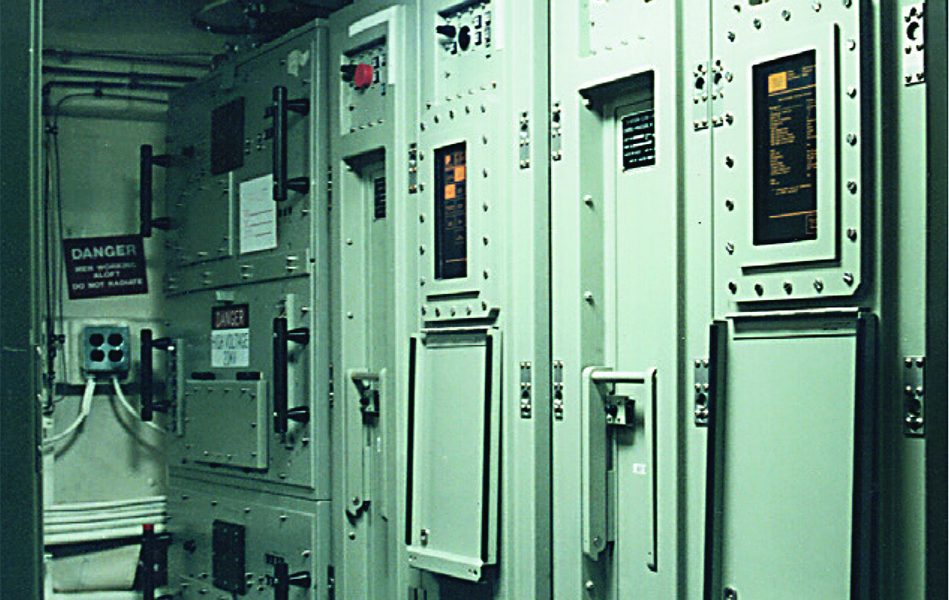
Expeditionary Sensor Grid
The US Navy plans to deploy a network of thousands of sensors on land, at sea and in the air, which will be linked together by an information transmission network. If this idea succeeds, it is expected that it will lead to a comprehensive change in the type and composition of naval forces in future wars. The idea for this network, called the Expeditionary Sensor Grid (ESG), emerged at the Naval Warfare Development Center, which develops future methods of naval warfare. The network includes about 10,000 sensors, including what is carried on unmanned air and naval vehicles, land and sea sensors, and unmanned amphibious vessels, in addition to containers for various weapons, such as missiles, mines, and torpedoes. These sensors will be deployed in a large area to supply forces with quantities enormous information. US Navy officials place this network on top of their priorities, as it will provide them with detailed knowledge of everything that is going on on the battlefield. In addition to the tactical importance of the network, it is expected that it will also affect the shape and nature of the naval vessels, aircraft and submarines used by naval fleets. The success of such a network ensures informational superiority, and thus, the possibility of saving huge funds for the development and launch of radars, guidance systems and infrared sensors, which are indispensable on board of all naval vessels and aircraft operating in the Navy. With regard to network-centric warfare in the US Navy, this part of the network work can be imagined like this: a pilot of F/A-18 Hornet, which is launched from the aircraft carrier, hovers over the battlefield, and a signal appears from the data link, indicating the appearance of a tank in the battlefield, with a complete plan for the aircraft to attack it. The plan includes the aircraft’s path, altitude, weapons readiness, target coordinates, and a proposed path for the return of the aircraft to the aircraft carrier after the attack. The pilot may appear in front of a picture showing the locations of friendly forces close to the target. The information was transmitted to the attacking aircraft and to command and control centers, connected to information transmission links, from another “Hornet” aircraft performing reconnaissance missions, by infrared sensors. On the aircraft carrier from which the attacking Hornet took off, as well as on the ground, commanders know where their forces are, how the attacks are conducted, and who can finish the job, if necessary.
The “Hornet” aircraft, on the aircraft carrier “John F. Kennedy”, designated for reconnaissance missions, use the advanced infrared aiming system, Advanced Targeting Forward-Looking Infrared Receiver (ATFLIR). It can also be used on the F-15 Eagle and F-16 Falcon combat aircraft, where it can detect and identify targets at ranges up to three or five times that of other systems currently in use. In anti-submarine warfare, the formation and construction of the sub water picture is not based on information from a single platform, but on information documented and combined from different sensors, and spread over a wide area. Many types of sensors can be used, such as ship sensors, seabed sensors, unmanned underwater vehicles sensors, aircraft sensors, helicopters or submarines sonars…etc.
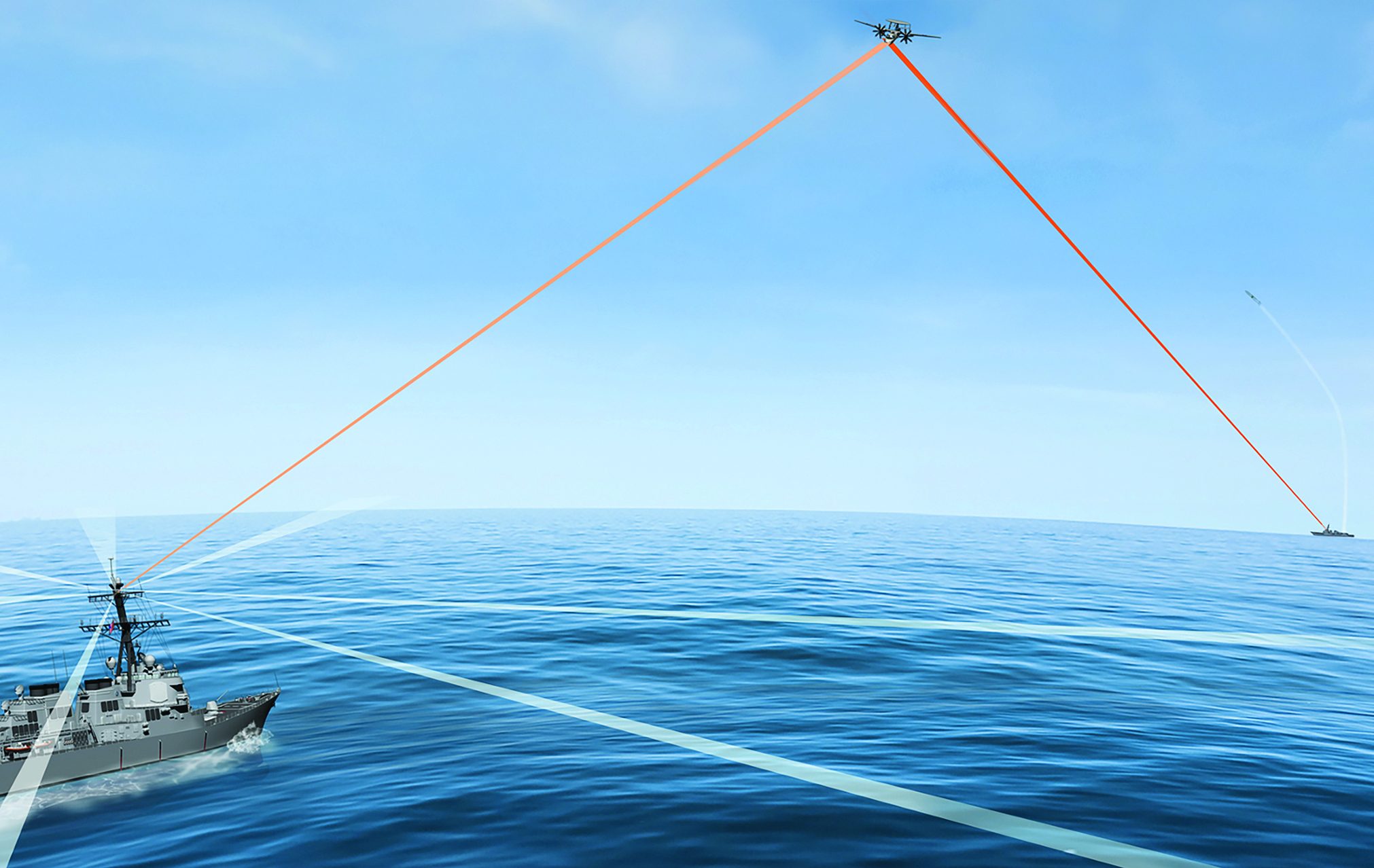
Data Distribution System
The Data Distribution System (DDS) constitutes a large-scale, high-capacity, highly confidential data transmission network between Cooperative Engagement processors that distribute key sensor data to all members of the Navy in real time, allowing all platforms to control the fire. Highly effective transmission power, spectrum propagation of wide frequency, and accurate timing are all required specifications, for which the system uses an electronically- scanned array of antennas to transmit and receive encoded data. These mechanisms have been on the table since 1987, but the practical initiatives for them came after two years of prior studies on the feasibility of entering into new equations in the field of military communications of a tactical nature, and actual production began in 2002 with plans to equip 250 marine units with the Cooperative Engagement Capability processor and to equip surface ships, surveillance aircraft, training and test sites, and US Marine Corps platforms.
The US Naval Systems Command is developing the Cooperative Engagement Capability (CEC) sensor network system, designed to provide early detection and consistent tracking of aerial threats such as cruise missiles, manned aircraft, and drones. This capability relies on a military communication system, with electronic countermeasures, and constitutes a protection for the fighting force. The system is a secure, high-speed interconnected weapons network that connects naval sensors to air defense systems.
In this context, the cooperative engagement mechanism constituted the required paradigm shift, and crossed the Atlantic to reach the United Kingdom, to cooperate in this advanced modern program, with the aim of rehabilitating the first system on Type-23 frigates. As for the Royal Navy’s Type 45 destroyers and new aircraft carriers, they will be equipped with a joint engagement capability, which is ready. The US Naval Systems Command is developing a network of sensors in Cooperative Engagement Capability (CEC) designed to provide early detection and consistent tracking of air threats, such as cruise missiles, manned and unmanned aircraft.
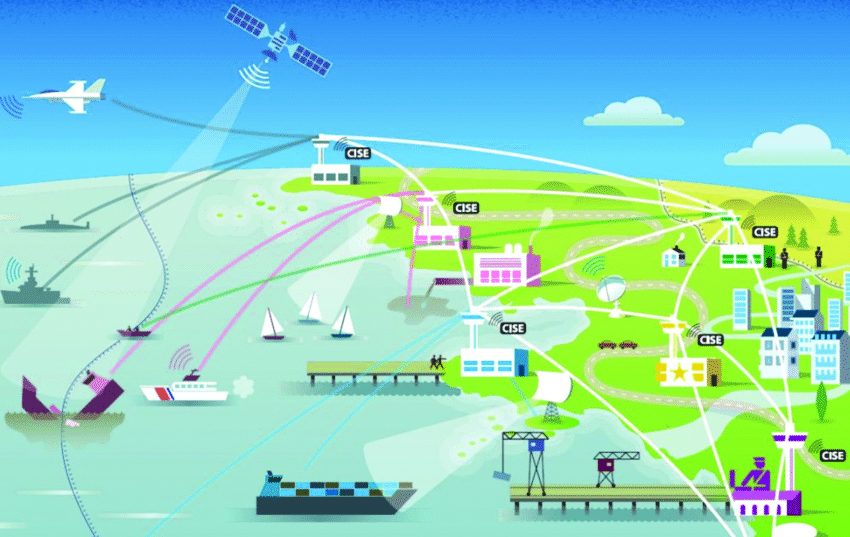
Enhancing maritime communication capabilities
The French Navy uses the latest expertise of European system integrators to enhance the effectiveness of maritime communications, realize the concept of network-enhanced operations and enhance broadband information exchange capabilities with French Navy aircraft. This program will crystallize the resolve and determination of the French Navy in pursuing the realization of the concept of network-enhanced operations, and enhancing the broadband information exchange capabilities of the information systems aboard French ships, by providing interoperability through many communication networks shared in the military structure of France and its allies.
The French Navy’s Air Force Communications Network is operated by the Joint Forces Directorate for Defense Infrastructure Networks and Information Systems DIRSI. This will introduce an administrative capacity for a redundant communications network, designed to monitor and manage the equipment that makes up the French Navy’s air force, from two locations on land.
The US Navy fleet is being provided with a Secondary Network Relay (SNR) Unit as part of the Combat Forces Tactical Networking Program for Command, Control, Communication, Computer, and Intelligence (C4I) systems. This unit allows the establishment of an improvised wireless network via Internet protocols used for tactical data exchange, enhanced field awareness, and collective planning using existing communication systems aboard naval fleets.
SNR is the best choice as a web-based protocol networking system to provide operational interoperability between Combined Maritime Forces and allied forces, by providing a common standard for collaborative planning and tactical information sharing. The secondary network communication unit is actually an architecture that includes communication relay capabilities, such as a text chat display, a signal-total display, and a data remote control unit.
The role of data links
The Navy has its own communications requirements and navies around the world have been at the forefront of developing Data Link technology to allow all units in the fleet to share data. Many navies aspire to link weapon fire management systems to all units in the fleet on the same data link network, so that senior commanders can initiate the engagement from a distance. This is the case for radar surveillance information, which modern navies would like to combine to generate a comprehensive picture of enemy activity in real time. In this picture, all units in the fleet then participate on different data links, such as JTIDS, Link-16 and others.
The Tactical Data Link, Link-11, is used to exchange data between command and control systems and sensor carrier units. It is the primary link for the United States Navy and NATO countries. It operates on the UHF-HF frequency space. It can work with satellites. Large range, encrypted, and the number of subscribers in the link is up to 62 subscribers. The link has two data transmission rates: the fast rate (2250 pulses/sec) and the slow rate (1364 pulses /sec).
For NATO naval forces, the Link-11 and its improved successor, Link-22, are synonymous with the Link-16 in the maritime sector, and are designed to provide communication with air, sea and land platforms, and operate in up to four networks. Connections are synchronously independent and can be recorded on up to eight networks. The Link-11 provides a range of 300 nautical miles using HF broadcasts, and this range is also covered by the UHF frequency, which is hampered by land curvature and terrain.
Link-11 has been widely exported to customers such as Brazil, which uses it as part of an upgrade package for its P-3 Orion aircraft, and the Romanian Navy uses the open-system architecture in a data link multiplexer terminal on board of two new frigates, Type 22, imported from Britain. This system uses Link-11 and Link-22, and sends data according to the changeable message format.
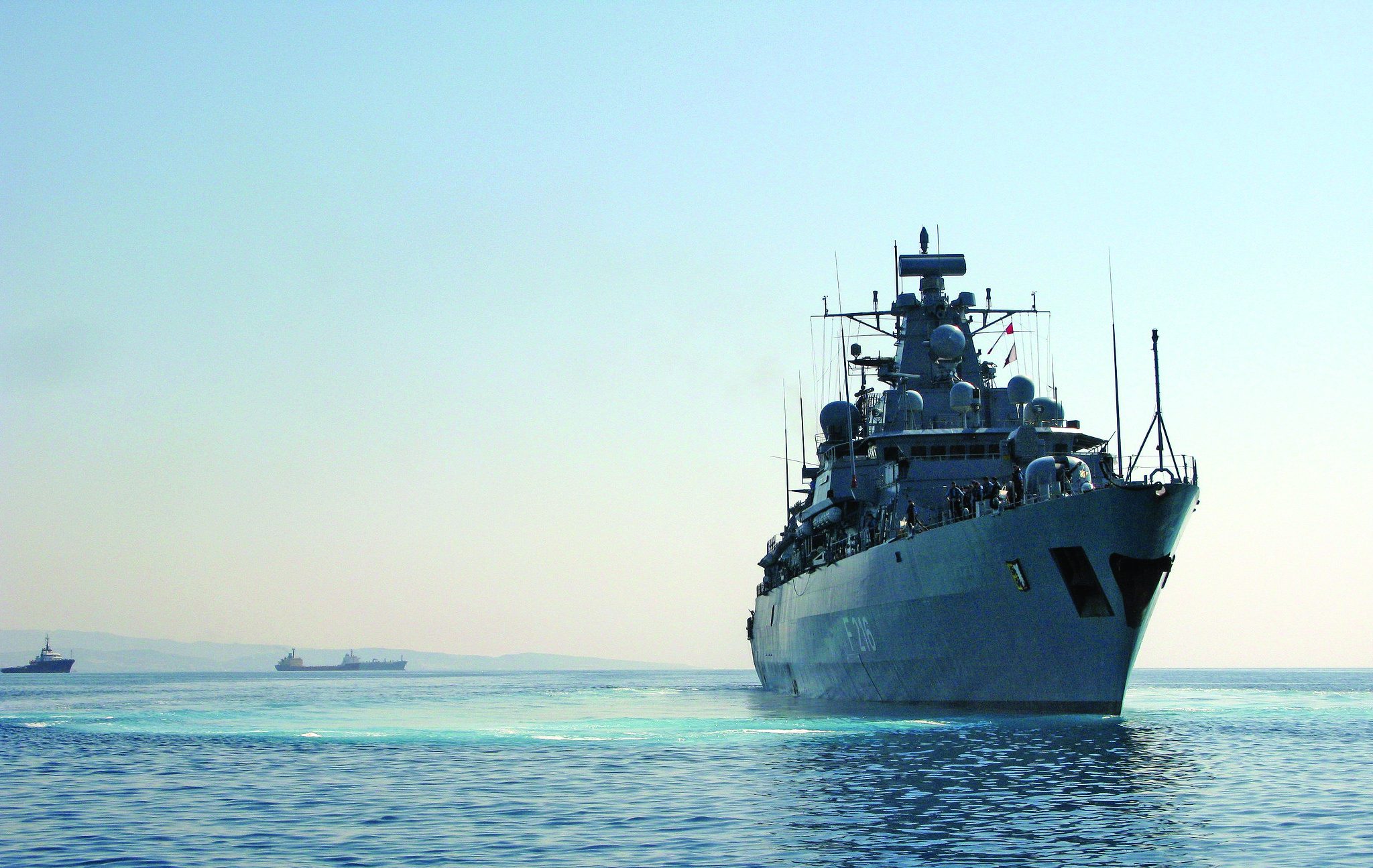
Information fusion technology
The information fusion technology generates marine images that form a true basis for a common situation that is placed at the disposal of naval commanders. The images are then shared in real time via data links with broadband communications with warships, aircraft, and other submarines, as well as general commands on land, so that commanders at sea can enjoy a common situational awareness to respond quickly to any new developments. Therefore, the Naval Operations Center is of vital importance to military operations, in general, because it contains a situational awareness system, which takes information from all over the world to build a common operational picture (may be a close-up of a suspicious ship, for example, that is updated every few minutes, or of a local spot surrounding a military ship or marine unit on shore). In the seventies of the twentieth century, a system of this type was designed with a frequency of updating the image for about 50 thousand registrations, and the number increased to about 200 thousand operations, with additional registrations made by aircraft.
The European Defense Agency is developing a maritime surveillance network and plans to set up its own operations and data center. The center’s overall goal, according to the agency, is to produce a technical solution that provides a jointly recognized and interconnected maritime image for all participants. The center’s program was launched in 2006 with the participation of 18 EU member states, including civil authorities and various EU agencies working in satellite imaging, maritime safety, border control and research. Software is being developed to adapt existing national networks and support and expand data sharing capabilities, via online protocols, as well as chat and instant messaging.
On the other hand, the European Common Information Sharing Environment (CISE) program aims to allow sharing of information control between different maritime control authorities, such as law enforcement, border control, transport, marine pollution control, fishing control and customs. The program is also expected to link all existing marine monitoring systems without resorting to creating a new system. Significant efforts have been made to collect and share data, such as vessel locations and shipping details, between relevant agencies, and to increase the effectiveness of surveillance operations with existing means. The British ship’s operations room adopts a system that can automatically track all known and unknown ships and identify potential threats. It is a customized situational awareness system that uses complex video image processing and analysis methods, and divides processing and analysis between the ship’s operations room and the control room on land. The ship gets updated images every 30 seconds thanks to data secured by Link 16, and information provided by Bowman’s tactical communications system linked to information provided by the combat system and displayed on the screens of the Royal Navy’s Command Support System.
Conclusion
Network-centric warfare poses many challenges to the currently known means of naval warfare, to the organization of naval fleets, and even to the systems and types of ships that need to be developed to cope with this warfare. Naval command and control technologies are now widely available, and many navies are looking to design systems that meet their specific needs, while using commercially ready technologies, reducing cost, speeding up integration, and allowing the easy introduction of non-military sensors. As a result of these systems, naval commanders have an unprecedented image of the naval battlefield based on situational awareness.
By: Major General Dr. Ali Muhammad Ali Ragab (A Military researcher and strategist)



